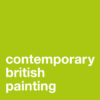
Katherine Russell: What led you initially to working with these ancient/traditional processes?
Susan Gunn: During my foundation year at Norwich University of the Arts I was interested in historic methods and traditional ways of working. I began experimenting, working from recipes and formulas from the Ralph Mayer Artists Handbook,[i] the purported Artists Bible. I had occasional direction from a tutor but was mostly left to my own devices. Like many artists through the centuries, I began making these gesso grounds as a surface to paint on. They grew to be very well executed and turned out beautifully smooth like a marble slab.
I found the gesso surface interesting and beautiful with the absence of imagery, in its raw, untouched condition. I began to think about this absence as a positive, as a kind of silence that speaks, that by somehow telling less it was possible to say more. I fell in love with the sacks of chalk and natural earth pigments, the fine smell of freshly made rabbit skin glue and with this repetitious, laborious process. I practiced the art of perfecting the ground of smooth gesso. It was impossible, by hand, for it to be flawless. The surface will always show fine marks and scratches, minuscule imperfections that betray the labour from the rigour of rubbing to its finished state. I find there is no other way to replicate the soft, bone-like chalkiness of traditional gesso; the modern, acrylic alternatives are acceptable as a ground to paint on but otherwise inadequate. As I experimented with different pigments and formulas my senses became more intuitive with the consistencies of the gesso paint and the probable outcomes of my mixtures.
On one occasion, a series of 5 gesso grounds that I was working on began to crack, the rabbit skin glue was the wrong ratio to pigment and in some cases the gesso dried and fell off… some of the paintings I was able to retrieve and others had to be discarded. I found this unplanned accident quite exciting: and I was further spurred on when a tutor told me I’d ‘done it wrong,’ that ‘rabbit skin glue wasn’t meant to be used in this way’, my Ralph Meyer Artist Handbook was in total agreement…
“As any artist who has become adept by the repeated preparation of gesso grounds knows, the unerring production of perfect gesso surfaces requires careful workmanship and a painstaking attention to detail.”[ii]
He goes on,
“cracks appearing on newly made gesso are… entirely undesirable..”
I love that the cracks and fissures appearing in my work are considered a ‘defect’ and a flaw. I have developed my practice provoking these imperfections in the surface to form paintings that take on the tension and stress in the gesso and canvas to form organic cracks in the surface. Over many years now, I have continued to experiment with the process. I feel satisfaction when the skill and technique of making a ground is complete, but in a sense, that is only the beginning… During the process, the exciting part is at the point when the layers are left to dry and they are allowed to break and crack. At this point the works have a life of their own, they are beyond my control and are in a transition process of forming their own identity… I have on occasion tried to sit in my studio to watch them crack but it normally takes far too long. My heart beats faster with excitement on my way to the studio the following day.
KR: Were you seeking an alternative or antithesis to modern/ man made materials?
SG: My intention is to use this natural paint in a new, contemporary way…
Simply because it has been around for centuries it doesn’t mean that gesso isn’t ‘modern’ … you’re right that I don’t like to use man made materials and prefer natural ones. I love the beauty of the material and to be able to use the substance of gesso in a new way excites me. I like authenticity and the surprises that natural substances present; the way they are part of nature in that they react to the environment. The gesso ground is quite porous so is susceptible to atmospheric changes and receptive to natural waxes that add to its stability.
KR: The process you use sounds quite labour and time intensive, do you work on several pieces concurrently? How do you start a piece? Do you have a pre-conceived notion of what the final outcome will be?
SG: I work in series usually on between 2 to 5 or 6 pieces depending on the size. It is practical to work this way because of the technique I use, the final outcome and sole of the gesso surface is re-enforced; two sections can be treated exactly the same but the outcome will always be different, highlighting the unique quality to each surface.
I begin by making rough drawings before choosing a line or series of shapes, and then I do formal layout drawings to scale on graph paper.
The spatial layout is regimented, measured… controlled. I sometimes use the principles of the golden section; the main thing is that they have a degree of spatial balance and symmetry. This is important because the final outcome is dependent on the accurate simplicity of the lines. The sections in my paintings are meticulously taped off using 7-8 layers of professional masking tape, each space is worked on separately and rubbed down, sometimes polished, before doing the next section. This is important as this adds stress to the paintings by heightening the tension in the canvas between the dry and wet spaces. This strain stimulates the appearance of the cracks and fissures in the surface as it dries out.
Although I plan the layout and obviously select the pigments and follow a fairly regimental process I have no control over the cracking process so therefore I don’t know how they will react or turn out.
The opposition between the regimented geometry, (which I control) and the uncontrollable, organic nature of the fissures that overspill the divisions is an interesting dichotomy.
KR: You say in your statement: ‘cracked areas and accidental nuances appear in the works that are engineered but ultimately beyond the final control of the artist.’ How do you then decide when a piece is complete?
SG: The painting is, what I would term, pre-complete when all the gesso areas on the surface of a work are dried out, at this point the cracks and fissures are evident.
The process of rubbing down the gesso, polishing, and applying waxes to protect the gesso are subsequent procedures to ensure a works stability, they change very little during this stage but become more durable and polished. On the more fragile surface that needs more support I use an encaustic wax that is burned into the surface and has the ability to hold the pieces together.
KR: Would you say the material is the subject?
SG: No, I would say the material is the medium…
KR: Do you always use these materials; gesso on canvas and the factors of temperature & time?
SG: I still make drawings but the gesso technique I have developed is really what I have continued to practice exclusively over the past 10 years. I believe it is reflective of me as an Artist and human being on various levels, as Lucien Freud once said, “every picture is a self portrait”…. I have developed a strong knowledge and understanding of the materials that I use; I embrace the complexity of the dust and the invariable ability it has to surprise. Some of the works that I bring back from near abandonment are the most rewarding and unusual pieces.
KR: How do you choose colour?
SG: Traditionally, gesso is made using a fine grade chalk mined from the earth; a soft white, fine-grained sedimentary rock consisting of nearly pure calcium carbonate that contains minute fossil fragments of marine organisms. I also use a beautifully soft lamp black and other earth pigments that are more vibrant…. Sometimes I am inspired by a particular location where the work will be site specific, sometimes I aim to portray a certain balance or opposition with colour…. but mostly, I have to say, the colour choice is secondary to the process.
KR: Scale: large or small – is this important to you. Do you have a set size in which you prefer to work or does it depend on different bodies of work?
SG: I love to make large works, the bigger the better! However, time and space mean It is impractical to work on a large scale all the time….I often work on suites of small paintings whilst I am working on a large piece which can take over 6 months to complete. I find sometimes the smaller works inform the large and vice versa.
KR: Would you use the term “abstract” to describe your work?
Or would (something like)‘psychological landscapes’ be more apt in your opinion?
SG: I don’t really like to direct the audience….. both phrases have been used in relation to my work and I welcome the viewers’ response. The word ‘abstract’ is quite loaded and often misused; it seems to mean different things to different people….
I would like for my paintings to exist on various levels. You may have noticed that many of my pieces have Ground in the titles. My paintings are quite literally a ground in the historical gesso sense, they are also made from earth, and in another sense they are a basis or ‘grounds’ for an understanding of something.
KR: What artists contemporary or historical influence or inspire your work and how?
SG: Callum Innes is one of my key influences….I was fortunate to be mentored by him when I was chosen for an Arts Council Escalator Grant in 2005. I have taken so much inspiration from visits to his studio in Scotland. He is such an ordered, meticulous worker and unafraid to be understated and restrained. I have taken elements of that discipline into my practice….I also take aspects of inspiration from Mark Rothko, Lucio Fontana, Robert Ryman and Sean Scully.
KR: Do you see your work as in any way religious or spiritual?
SG: I would like to think my paintings have a degree of spiritual resonance but not in a religious or denominational sense.
KR: What are you working on now?
What plans do you have for the future, shows etc?
SG: At the moment, I am working on proposals for an exciting new commission; it’s a big project due for completion in 2015. I’m thrilled to have work in an exhibition of Modern Abstract Painting at Swindon Museum and Art Gallery in 2014 alongside artists Howard Hodgkin, John Hoyland, Simon Carter and other amazing painters. I also have work in the East Anglian Contemporary Collection’s third and final exhibition at the Waterfront Gallery in Ipswich in 2014.
i) Mayer, Ralph. The Artists Handbook of Materials & Techniques 5th Edition Faber & Faber 1991…1st Edition Penguin 1940
